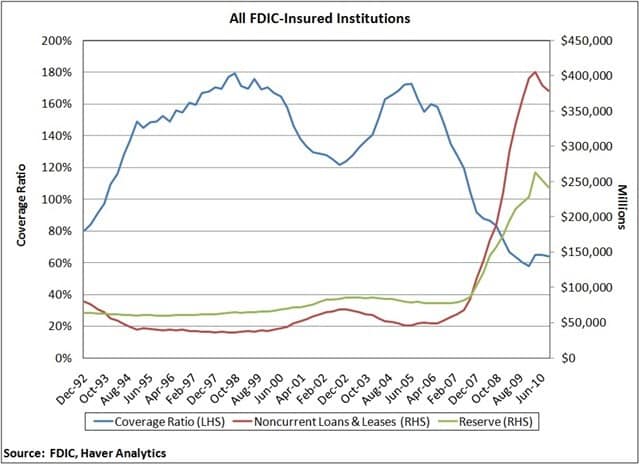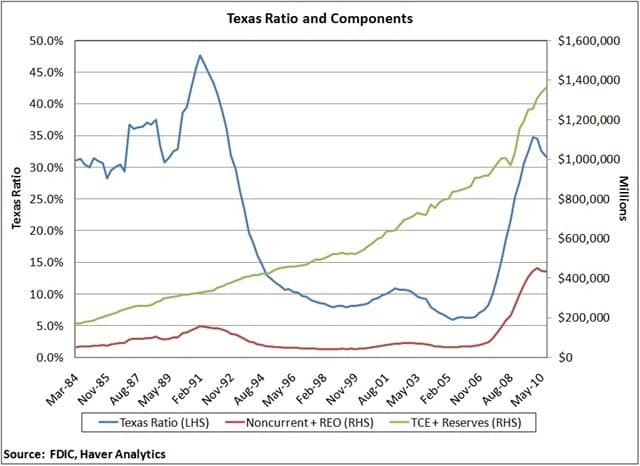Bank Earnings Rise over 600% in 3rd Quarter!
The title of this piece is strange but true. The FDIC released its Quarterly Banking Profile for the 3rd quarter of 2010 this morning, trumpeting $14.5 billion in profits (up from only $2 billion in the year ago period, prompting our headline). Two quotes from the release caught our attention. The third bullet point on the lead page of the document states: “Lower loan-loss provisions remain key to earnings gains.” The next was a statement by Sheila Bair in the press release: “At this point in the credit cycle it is too early for institutions to be reducing reserves without strong evidence of sustainable, improving loan performance and reduced loss rates.”
As is our habit, we take a look at the QBP with a few of our favorite recurring charts.
After increasing for two quarters in a row, the coverage ratio resumed its decline in the 3rd quarter, falling to 63.9% from 65% in the previous quarter.
The provision for loan losses fell by 13.4% over last quarter, and its current run rate is down by more than half from its peak in the 4th quarter of 2008. However, net charge-offs have exceeded provisions for 3 quarters in a row, causing the reserve for loan losses to decline. If the coverage ratio is to improve from current low levels, it should be obvious that the reserve for loan losses can’t come down in lock step with noncurrent assets. Particularly in light of the future financial regulation and looming increases in capital ratios, we are surprised that banks continue to engage in this process. We would give banks the benefit of the doubt to suggest that they are simply discounting better future credit performance, but this may be overly kind. This is clearly being driven by the largest banks, as 60% of insured institutions are still increasing their reserves. As an aside, the number of troubled banks continues to rise and now stands at 860, up 22.5% since the end of 2009.
Another useful metric is the Texas Ratio. Measuring noncurrent loans and real estate owned (REO) as a percentage of tangible common equity (TCE) and reserves, this ratio remains elevated but is moving in the right direction.
As we saw in the first chart, noncurrent loans are declining, but REO on bank balance sheets is rising quickly and just broke through the $50 billion mark for the first time in the history of this data set.
We’ll give Chairman Bair the last word: “When it comes to the adequacy of reserves, institutions should always err on the side of caution."
Amen to that.


Comments are closed.